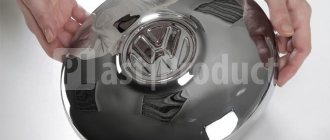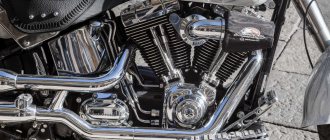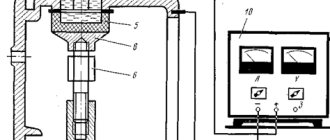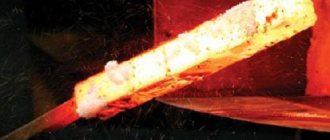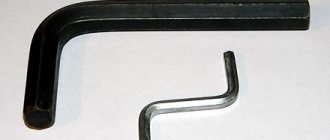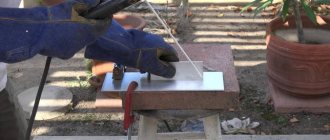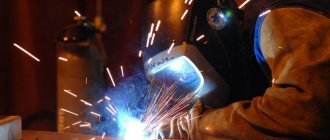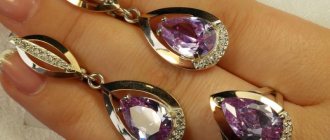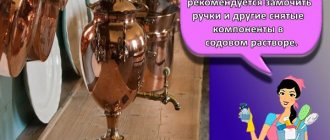Nickel plating is the most popular electroplating process. Attractive appearance, high corrosion resistance and mechanical properties speak in favor of the wider use of nickel for decorative, protective and functional purposes.
Nickel applied directly to steel is in the nature of a cathodic coating and therefore protects only mechanically. The discontinuity of the coating contributes to the formation of corrosive couples, in which steel is a soluble electrode. This results in corrosion under the plating, which erodes the steel substrate and causes the nickel plating to peel off. In order to prevent this phenomenon, the steel must be coated with a dense, non-porous, thick layer of nickel.
Nickel coatings are the basis of multilayer decorative and protective systems Ni-Cr and Cu-Ni-Cr. The use of baths with shine formers greatly simplifies the technology of applying multilayer coatings.
Due to its high mechanical properties, nickel is used to restore worn machine parts, galvanoplastic production of injection molds, and structural elements that are difficult or even impossible to produce using conventional mechanical methods. In the chemical industry, a thick layer of nickel is used to cover parts exposed to strong alkalis.
Nickel plating baths
Widely used in workshops is a bath consisting of three main components: nickel sulfate, boric acid and chloride, such as nickel.
Nickel sulfate is a source of nickel ions. Nickel chloride significantly affects the performance of nickel anodes. In chloride-free baths, strong passivation of nickel occurs, as a result of which the nickel content in the bath decreases, and the result is a decrease in current efficiency and deterioration in the quality of coatings. In the presence of chlorides, the anodes dissolve to a degree sufficient for normal nickel plating. Chlorides increase the conductivity of the bath and the “operability” of the bath when contaminated with zinc. Boric acid makes it easier to maintain pH at the same level. The effectiveness of this action largely depends on the concentration of boric acid (in practice, predominantly ~30 g/l).
The use of nickel chloride is not considered desirable by everyone. Due to its high price, and often difficulty of acquisition. However, it is necessary to take into account that when introducing nickel chloride into the bath, we also introduce nickel into the bath. NiCl2•6H2O chloride theoretically contains 24.69% nickel and, therefore, by introducing this chloride in an amount of 40 g/l, we increase the nickel content in the bath by approximately 10 g/l, which already has a certain value.
Another frequently debated issue is the use of sodium chloride as a source of chlorides. It is known that many electroplating shops successfully introduce NaCl into bright nickel plating baths.
There are many reasons for poor performance of nickel baths, and the claim that the reason is the use of table salt has little justification. Even the English company Canning, well known among electroplating technicians, introduces sodium chloride in the amount of 28 g/l into the NiSOL bright nickel plating bath. Instead of sodium chloride, another chloride can be used, for example, as in PNR, magnesium chloride. The Watts sulphate bath has been known and widely used for many years. The contents of individual components - the basis of Watts baths for applying matte coatings are, g/l: (200-350) NiS04•7H20, (30-60) NiС12•6H20, (25-40) H3BO3.
Often, additives of so-called electrically conductive salts are added to the Watts bath, which increase the electrical conductivity of the bath and improve the appearance of the coating. Among these salts, the most commonly used is magnesium sulfate (~30 g/l); in baths for mass treatment of small parts, its concentration is much higher.
Nickel sulfate is most often introduced in a concentration of 250-350 g/l. For a long time, an upper concentration limit was considered appropriate, which made it possible to carry out the process at high current densities without fear of burning the coating on the ribs and protruding areas. Recently, there has been a tendency to limit nickel sulfate to less than 200 g/l, which significantly reduces solution losses.
The concentration of chlorides in a nickel bath is not precisely standardized. In so-called chloride baths the concentration of nickel chloride exceeds 200 g/l and therefore there is no need to add nickel sulfate. In a workshop environment this is not justified, even based on the price of nickel chloride.
The concentration of boric acid reaches 25-40 g/l. Below 25 g/l the tendency for the nickel bath to become alkalized rapidly increases. However, exceeding a level of 40 g/l may be unfavorable due to the possibility of boric acid crystallizing in the form of crystals deposited on the walls of the bath and anodes. This phenomenon occurs especially easily in unfavorable or poorly heated baths.
The sulfate bath operates over a wide range of temperatures, current densities and pH. At room temperature, nickel plating is rarely used. For coatings applied in cold baths, nickel peeling off along with the chromium often occurs during decorative chrome plating. Therefore, the bath should be heated to at least 30 °C.
The bath with blackening agents operates at 50-60 °C. The current density must be selected experimentally so that coatings are not burned.
The sulfate bath works reliably over a wide pH range. Previously, baths were usually maintained at a pH value of 5.4–5.8, which was motivated by the less aggressiveness and better hiding power of the bath. However, such a high pH value leads to a significant increase in stress in nickel coatings. Therefore, in most baths used in industry, pH = 3.5–4.5.
Modern baths require mixing, which is necessary from the point of view of intensifying the nickel plating process and reducing the risk of pitting. Stirring the bath entails the need for continuous filtration in order to eliminate mechanical impurities.
Mixing with a moving cathode rod is not as effective as mixing with compressed air, and in addition, it requires a special ingredient that prevents foaming. Accordingly, purified air is currently used in the galvanic workshops of Poland to mix all nickel baths equipped with devices for bright nickel plating, manufactured at the Institute of Precision Mechanics.
Areas of application of Invar
This alloy of iron and nickel is produced in the form of wire, thin flat strip, or can be given a different shape at the request of the customer. For example, sometimes small sheets, rods, or Invar tape are required. During the manufacturing process, it is possible to improve the properties of the metal using special technological conditions, such as melting followed by heat treatment, specific deformation and surface treatment.
Different types of invar are used to create transitions from metal to glass and to produce membrane containers used in the process of transporting liquefied gas. In microelectronics, an alloy of iron plus nickel plays the role of chip substrates, laser housings, and waveguides. Not long ago, a reliable method of welding Invar appeared, due to which the metal began to be used in an even greater number of industries.
Since we are talking specifically about a magnetic alloy of iron and nickel, which is explained by the presence of internal magnetism in its main components, invar is actively used in electrical engineering. It is a material for permanent magnets, transformer cores, electrical measuring instruments, and electromagnets.
In addition, parts made from it can be found in household appliances, such as televisions, radios, audio and video recorders, and sometimes in high-precision pendulum clocks.
This alloy is used in the production of parts for devices, measuring and experimental equipment, providing them with the ability to maintain linear dimensions under any external conditions.
Today, the production of sensors and energy converters cannot be done without invar; it plays the role of a component in bimetallic elements. Special characteristics made it possible to use this metal for its original purpose - as a material for standards of length and mass.
Recommended articles
- Technological properties of metals and alloys: key features and types
- Carbon structural steels: types and advantages
- Corrosion-resistant steel: types and features
However, the small size of parts, the complexity, and the high cost of producing elements from precision metals lead to the fact that all equipment whose components consist of Invar must be operated with extreme caution.
In modern industry, only alloys are used. Thus, almost all the iron mined in the world is used to produce cast iron and steel. This is due to the fact that alloys are superior to pure metals in their properties, because they are characterized by such qualities as strength, hardness, elasticity, and ductility. And alloys of iron and nickel, among other things, have magnetic properties. At enterprises they are further strengthened by alloying.
General characteristics of bright nickel-plated baths.
Traditional baths for applying matte coatings are currently used indefinitely. They are used, in particular, for pre-nickel plating of steel products before acid copper plating, in the belief that on matte nickel the matte coating deposited in an acid bath has better adhesion than on bright nickel. This assumption is sometimes justified, since decomposition products of organic additives accumulate in baths with brightening agents, leading to passivation of nickel coatings, mainly in galvanic workshops, whose workers neglect the rules for preserving nickel baths that have been used for a long time without regeneration.
However, there is a situation that forces one to abandon nickel plating in baths with shine-forming additives, for the reason that shiny coatings are not flexible enough and are destroyed when nickel-plated objects are bent. Before deciding to use bright nickel plating in series production, the suitability of the process must first be tested on samples.
Matte car color advantages and disadvantages
Matting a car is not yet very popular, but its advantages are difficult to deny. Why is the matte color of the car gaining more and more fans?
It's mysterious and stylish - the lack of glossy shine gives the car's color an inexplicable depth. It's unusual and attracts attention. A matte car catches the eye, arousing interest not only in the car itself, but also in its owner. It's expensive and sophisticated. The unobtrusive color saturation gives the car a solid and luxurious appearance. This favorably emphasizes the lines of the body. The matte color without the usual play of polishing forces you to focus on the shapes of the wings, hood, roof, giving the already flawless lines real perfection. It's practical in its own way. Car gloss requires intense daily polishing, which is not necessary if the car's color is matte.
However, it is still difficult to call matting a car an ideal solution: all its advantages are only one side of the coin. This method of changing the appearance of a car also has its disadvantages:
There is no need to polish a matte car, but you will still have to constantly take care of it: such a coating quickly collects dust and sand, which are extremely noticeable against a lackluster background. Even the smallest damage to the matte finish of a car is clearly visible and difficult to repair; If the car is painted with matte paint, it is very difficult to re-match the color even for experienced craftsmen, especially if there is no sample; Matte color is not suitable for any car: it perfectly focuses attention on the magnificent shapes of cars above the average price segment, Executive and Luxury class cars, high-quality SUVs and sports cars. Budget cars and domestic “classics”, made in a matte color, will look ridiculous and rough... If the shortcomings do not deter you, and the desire to become the owner of a car of a rare color only grows stronger, you can try to make your dream come true
But before that, you should learn more about matting a car.
If the shortcomings do not deter you, and the desire to become the owner of a car of a rare color only grows stronger, you can try to make your dream come true. But before that, you should learn more about car matting.
Consumption of nickel anodes.
Practitioners who deal with nickel plating on a daily basis know that nickel consumption is associated mainly with the consumption of nickel anodes, which also determines the need for frequent replenishment of the anodes; At the same time, the bath works for months without the need to add nickel sulfate.
Wanting to save on nickel, some workshop workers take the line of least resistance and simply apply a thin coating, thereby degrading the quality of the product. The dependence of the mass of deposited nickel on the coating thickness is shown in table. 1.
TABLE 1
THE TIME REQUIRED TO OBTAIN A NICKEL COATING OF A SPECIFIED THICKNESS, S, AND THE MASS OF DEPOSITED NICKEL, mNi, DEPENDING ON THE CURRENT DENSITY. CATHODE CURRENT OUTPUT 92.5%
| Thus, with a nickel coating thickness of 10 microns, often used as a sublayer under decorative chrome for light operating conditions, 0.89 g of nickel is theoretically deposited per 1 dm2 of surface, but in practice it will be more. Even if we accept a nickel consumption of 2 g/dm2 and assume that 1 kg of nickel costs 1000 zł, it turns out that the cost of the required nickel is 2 zł. Consequently, reducing the thickness of the coating does not provide much savings and can damage the company's reputation. |
Printing pigments
For different printing methods, pigment is used from the same metal raw material, but with particles of different sizes. For offset and letterpress printing, flakes with a thickness of about 0.1 microns and a diameter of 3.5 microns are needed. And for gravure and flexographic printing, polished particles with the same thickness have a diameter of 8 to 9 microns. It would seem that the easiest way to increase shine is to use a pigment with enlarged particles. But for good covering properties in the paint, it is necessary to maintain a sufficiently high pigment content, and an increase in the size of metal particles leads to a weakening of the action of binders and settling, precipitation of bronze or aluminum pigments.
The shelf life of finished paint is sharply reduced. In gravure printing, the presence of particles larger than 10 microns in ink leads to the formation of absorption and other defects on the print - mainly due to unwanted accumulation of ink behind the squeegee. Such layers of paint “pop out” from under the knife from time to time, significantly worsening the quality of the finished product. It follows that in metallic printing inks particles of arbitrary sizes cannot be used, and when combining, a certain balance must be maintained.
Dry metal powder is transformed into ink suitable for printing processes thanks to the binders that envelop and carry each pigment particle. The powder is slightly moistened beforehand to facilitate subsequent mixing. Naturally, the composition of binders for inks intended for different printing methods is different. The composition of firnis (prepared binders) for offset inks includes solid resins (modified rosin and/or hydrocarbon resin), plant-based alkyd resin, mineral oil thinner, vegetable oils, structure formers. Ink binders used in gravure printing include cellulose derivatives (nitrocellulose, ethylcellulose, cellulose acetate butyrate and cellulose acetopropynate), polyamide resins, vinyl copolymers and other resins.
Preparation of nickel plating baths.
To prepare nickel plating baths, it is recommended to use demineralized water or, in extreme cases, tap water. Ground water should not be used. Working and spare baths made of steel sheet are lined from the inside with hard rubber or polyvinyl chloride. Both baths are thoroughly washed and filled with water, adding sulfuric acid ~5 g/l.
The next day, the baths are thoroughly rinsed and the spare bath is filled halfway with water. The water is heated to 60 °C and with constant stirring, first boric acid is dissolved, then nickel sulfate and nickel chloride.
Since technical chemicals contaminated with foreign metals and organic compounds are usually used to prepare a bath, preliminary cleaning of the bath is necessary. For this purpose, the pH of the bath is increased to 5.0 by introducing freshly precipitated nickel carbonate obtained from nickel sulfate.
In a separate vessel, half filled with warm water, dissolve nickel sulfate and fill it with an aqueous solution of sodium carbonate until the green precipitate of nickel carbonate completely disappears. Carefully drain the water, and add the remaining sediment to the bath in small portions with constant stirring until pH = 5.0. Commercially available basic nickel carbonate is not as good as freshly prepared nickel carbonate because it is less soluble.
Some simplify the process of increasing pH by adding 20% NaOH in small portions to the bath instead of nickel carbonate. The solution must be vigorously stirred for an hour until the green suspension of nickel carbonate is completely dissolved.
After increasing the pH to 5.0, add an aqueous solution of potassium permanganate in small portions with constant stirring until a stable pale pink color appears. Then add activated carbon “Carborol S-extga” (1 g/l) and stir for 2 hours. The bath is left alone until the next day. In this state, the bath should have the natural color of nickel sulfate, but if it does not have this color, then add sulfuric acid to pH = 3.8-4.0; onto the cathode rod until the purple color disappears.
Further cleaning consists of running the baths at low current densities. The solution, previously purified in the spare bath, is pumped into the working bath, adjusted with demineralized water to the specified level, and sulfuric acid is added to pH = 3.8–4.0; the maximum possible number of corrugated steel plates is hung on the cathode rod and a current with a density of initially ~0.5 A/dm2 is turned on, and after several tens of minutes it is reduced to 0.2–0.3 A/dm2. Electrolysis lasts 6 hours with constant stirring and temperature ~ 60 °C. Once the pH is adjusted to normal, the cleaned bath is ready for use. Test loads are nickel-plated in it in order to select optimal processing conditions. For bright nickel plating, appropriate substances are added.
Operation and regeneration of nickel baths. Stabilization of nickel plating baths consists of maintaining specified concentrations of individual components and regulatory removal of contaminants.
It is easiest to adjust the composition based on chemical analysis, but an experienced electroplater can solve these problems independently.
Particular attention should be paid to monitoring and adjusting the pH - a daily responsibility of the personnel responsible for the reliable operation of the nickel bath. Note that this is not very difficult, since the bath gradually becomes alkalized, and, therefore, there is a need to add pure sulfuric acid. Prepare a solution containing 25% (vol/vol) concentrated acid and 75% (vol/vol) distilled water, and add it in small portions to the bath with constant stirring. To control pH, it is enough to have a limited set of indicator paper, for example, three to five ranges produced by PNR.
The color scale on this paper is not as expressive as on Merck papers, but after a certain time the operating personnel will gain experience and will be able to read pH values with sufficient accuracy. Failure to comply with the required pH value will result in a noticeable deterioration in the quality of coatings.
At a very high pH value, i.e. with insufficient acidity, coatings become brittle and prone to peeling, and also acquire a yellow tint; Burning of the coating also easily occurs in places of high current densities. At a pH less than 4, the gloss of the coating is weakened. A nickel bath is easily contaminated with metal impurities, especially when processing brass and zinc products: most often - copper, zinc, iron and lead. Copper gives nickel plating its dark color.
A low concentration of zinc leads to the appearance of black dots on the nickel coating, a high concentration of zinc manifests itself in the form of blackening of the coating in places of low current densities; Heavy zinc contamination can cause black streaks to spread over the entire surface.
Iron contamination leads to an increase in internal stresses in the coating, resulting in the brittleness of nickel. A colloidal suspension of iron compounds appearing in a nickel bath can cause severe pitting.
Lead contamination appears as a brown or silver-brown layer in areas of low current density. Lead can enter the bath from lead pipes used for heating or from immersion heaters placed in a lead casing. This is extremely harmful for baths with shiners.
Impurity metals are removed electrolytically at low current density using the method described when preparing the bath. Cleaning time depends on the degree of contamination of the bath and can last from several hours to several dozen. After a certain time, the steel sheets should be removed from the bath, cleaned with a steel brush and placed back into the bath. You should not leave de-energized sheets in the bath, as this leads to at least partial dissolution of contaminants in it.
Modern nickel plating baths are mixed with air and, therefore, mechanical impurities settling at the bottom are distributed throughout the entire volume of the bath and some of them enter the coating, giving it roughness. Thus, there is a need for continuous filtration of the bath, although most workshops avoid this, limiting themselves to periodic filtration, and do not complain about the roughness of the coatings. This indicates the ability to maintain the bath in proper cleanliness, first of all, the impossibility of getting anode sludge into the bath due to its good retention by the anode bag.
There are different opinions regarding the filtration of bright nickel plating baths using activated carbon. Theoretically, during each bath filtration, carbon should be used to remove harmful organic contaminants, which include, among other things, decomposition products of shine-forming additives. In fact, coal also absorbs some organic additives necessary for normal operation, as a result of which the consumption of rather expensive drugs, for example, “DF-bis” increases.
Despite this unfavorable situation for the consumer, it is necessary to choose a middle ground here, which is that filtration through fresh activated carbon occurs once a week and, finally, the frequency of carbon replacement can be set based on your own observations. Complete abandonment of coal is a technical mistake, since over time the bath becomes so contaminated with organic compounds that the coatings become brittle and passivated, making their decorative chrome plating difficult.
However, it is necessary to pay attention to the type of activated carbon. In Poland, Carbonol S-extga coal is used in dusty form. Random varieties can do more harm than good as they are contaminated with impurity metals such as zinc.
Despite great care of the nickel bath, it can become so contaminated with organic substances that a major regeneration using potassium permanganate becomes necessary.
The contents of the bath, heated to 60 °C, are pumped into a spare bath and the pH is adjusted to 5.5-5.8 using nickel carbonate. Permanganate dissolved in water is added in small portions until a pale pink color is obtained. Thorough mixing is required during the administration of permanganate.
For each liter of bath thus treated, add 3 g of activated carbon and stir vigorously for several hours. Then leave the bath for 10-12 hours, after which the clear solution is carefully filtered into the working bath, without touching the sediment at the bottom. If the pink color remains, then add perhydrol, diluted in distilled water in a ratio of 1:5 until the normal green color of the bath is obtained. To prevent excess perhydrol, it is added in small portions. After adjusting the pH, test products are nickel-plated, remembering that the shine will be worse, since part of the shine-forming solution has been destroyed and only after adding shine-forming agents will the desired decorative appearance be obtained.
Iron contaminating the nickel bath is mainly removed during the low current density treatment described above, however, to more completely remove this metal proceed as follows:
the electrolyte is poured into a spare bath, heated to a temperature of 60 C and alkalized to pH = 6 with nickel carbonate or caustic soda, and stirring is necessary. Then add perhydrol in an amount of 1 cm3/l, stir for 3 hours and leave until the next day. The light solution is carefully filtered into the working bath, making sure that the sediment at the bottom of the bath does not fall into the clean bath.
After bringing the pH to normal, test nickel plating is carried out and glitter-forming additives are added until the desired gloss is obtained.
The correct dosage of brightening agents is the main requirement for success in bright nickel plating. Manufacturers of brighteners give approximate consumption of the substance depending on the amount of electricity passed in ampere hours, but few workshops have electric meters, and recording the load of the bath in the form of detailed records is not as simple as it seems.
During long-term operation of the bath, various situations arise, which are accompanied by a significant loss of brightening agents, for example, during the regeneration of the baths described above. This happens outside of electricity.
The content of the brightener in the bath can be determined analytically, but for this you need to have the appropriate equipment and a thorough knowledge of laboratory techniques. You can use the services of special laboratories, but this is not always possible. Consequently, it remains the own initiative of the galvanizer servicing the bath, or another more competent person.
If we get a semi-shiny coating, this means that there is very little shine-forming agent in the bath. For 100 liters of bath, you can add 25 cm3 of the “DF-bis” additive. If this does not lead to an improvement in shine, then the reason lies in the bath itself. The pH and temperature of the bath should be determined and, if after adjusting these parameters there is still no improvement, then it is necessary to begin cleaning the bath using activated carbon and electrolysis at low current density, which is described in detail when considering baths.
A very difficult situation arises in the case of excessive introduction of brightening agents. In this case, the coatings become brittle in areas of very low current density; for example, in places where the product comes into contact with the pendants, visible black spots form and there may even be final defects in the coatings. Therefore, it is necessary to get rid of excess brightening agent by working the bath under normal conditions, hanging waste steel sheet on the cathode rod, degreasing them accordingly and etching them.
One of the common defects of nickel coatings is porosity - the so-called pitting - small depressions in the coating, reminiscent of pinholes, that occur during nickel plating as a result of the adhesion of hydrogen bubbles to the cathode surface. This is due to the high surface tension, especially in nickel plating baths. A coating does not form at the location of the bubble; a crater appears.
In addition to hydrogen, air bubbles contained in the bath can also settle on the surface of the cathode. The idle bath cools and absorbs a certain amount of air. When the bath is heated, air is released in the form of bubbles, some of which settle on the surface of the cathode, leading to pitting. Before starting nickel plating, the bath should be heated to a temperature several degrees higher than usually used, turn off the heat and wait until the temperature drops to normal. In addition, air may enter the bath due to a leak in the filter pump. Pump leaks should definitely be eliminated.
The condition of the substrate also has a great influence on the formation of pitting, the porosity of which, non-metallic inclusions and all kinds of surface contamination contribute to the formation of pitting. Contamination of the bathtub with suspension or decay products of organic substances also affects the bathtub in the same way.
To prevent the formation of pitting, oxidizing or wetting agents are added to the bath. The first includes hydrogen peroxide, added to ordinary baths in the form of perhydrol in quantities of 0.2-0.5 cm3/l.
Perhydrol is not added to baths with shine formers, as it has a destructive effect on organic substances. In such cases, wetting agents, for example, sodium lauryl sulfate, are added in an amount of 0.1-0.2 g/l.
Hydrogen peroxide and wetting agent are not radical anti-pitting agents. Mechanical shaking of products on suspensions in the bath helps eliminate gas bubbles. A movable cathode rod, or even better, mixing the bath with compressed air, makes the fight against pitting much easier. For persistent pitting, bath cleaning with activated carbon should be used.
How is dyeing done?
An important stage is preparatory work with the surface. This is especially true for glossy products rather than matte ones. Even small defects can be noticeable on smooth materials; this will only harm the effect of chrome. The room must be completely free of dust during processing. Only after the necessary conditions have been met can you proceed to subsequent processing.
Liquid acrylic compositions (liquid chrome) have their own positive qualities. They are heat-resistant, able to withstand any chemical exposure, moisture in any quantity. Unlike powder compositions, liquid acrylic materials can be applied to parts of parts, creating multi-colored chrome-effect paint designs.
The workflow itself is described as follows:
- The part is first primed and then coated with a layer of black dye
- The color may be different, it does not play an important role.
- Polishing is carried out after the initial layer has dried.
- Using an aerosol can, we apply paint with a chrome effect; there may be several layers.
- Each chrome layer must dry thoroughly before applying the next one.
- The final stage is varnish treatment.
Powder paint Bosny belongs to another type of composition
The elements that are included in its composition provide a chrome effect and increased coating durability. This option is ideal for disks
Powder paint Bosny belongs to another type of composition. The elements that are included in its composition provide a chrome effect and increased durability of the coating. This option is ideal for disks.
The painting process is not particularly problematic and can be easily done in a garage. There will be four stages in total: thorough cleaning of parts, primer coating, drying, and application of powder paint.
Nickel anodes
Nickel anodes are manufactured in accordance with the PN-82/N-92914 standard with dimensions of 25x25x(3-8) mm and sheets 100-300 mm wide, 600-1000 mm long and 6-12 mm thick.
The chemical composition of the anodes must comply with the PN-79/N-8181 standard, and the sheets - with the PN-79/82180 standard. Anodes in the form of sheets have grades No. 2, No. 3 and No. 6A. For bright nickel plating, anodes No. 2 are used. An example of anode designation when placing an order: nickel anode No. 2 8Х300Х600 in accordance with standard RN-82/N-92914. The cubes are placed in titanium baskets.
Water-soluble metallic paints
Changes in the technology of manufacturing and using metallized paints were caused by increased demands from customers and legislators. We had to look for new paint formulations based on solvents and at the same time develop metallized water-based paints.
In narrow-web flexographic printing, water-soluble metallized inks are already widely used today, since this sector traditionally works with water-based inks and has adopted its own standards.
Strictly speaking, water is also a solvent, only inorganic, and is very difficult to volatile: the evaporation number of water is 90, that is, it evaporates 90 times slower than ether.
In addition, water has a stronger surface tension than other solvents. But artificial resins, which are used as a binder, do not dissolve in water!
To make them water-soluble, resins are emulsified in water like a dispersion or neutralized with ammonia or organic amines (saponification). It is clear that water-soluble inks dry more slowly than regular inks, and this process can be accelerated by increasing the temperature, additional ventilation, reducing the printing speed and reducing the stack height. When intaglio printing, the etching depth of the impression cylinder must also be reduced.
In addition, they are more difficult to wash off. Because of their chemical composition, water-soluble paints and varnishes adhere well. Therefore, the rollers and cylinders must move until the work is completed, and after running the print run, all parts of the machine in contact with the paint must be immediately washed with water or a mixture of water and ethanol. Dried paint can be removed using a mixture of water, ethanol, ammonia or amine and any cleaning agent. Ethyl acetate will also work well to clean dry cylinders. Paints containing water should never be left in the cold.
Unlike ground gold paints or offset bronze paints, which are fixed as a result of oxidative polymerization, paints with a binder composition similar to dispersion varnishes do not have a characteristic odor and are suitable for printing on food and cigarette packaging.
In terms of the quality of the metallic sheen and the degree of gloss, prints obtained using these inks, which can be applied through a modified varnish tower of an offset printing machine, are far superior to the results achieved today with offset printing. These paints are supplied in both one-component and two-component forms.
You can introduce colorful tints yourself using a special series of concentrated colorful pastes.
The advantages become obvious when comparing this method with bronzing. Gold priming and bronzing require additional work steps and space for intermediate storage of prints between operations. In addition, this process is labor-intensive and harmful due to the formation of dust from the metal pigment.
Removing Nickel Platings
Nickel coatings on steel and copper alloys are typically removed in a dilute sulfuric acid bath. To 20 liters of cold water, add 30 liters of concentrated sulfuric acid in portions with constant stirring, making sure that the temperature does not exceed 60 ° C. After cooling the bath to room temperature, its density should be ~1.63.
In order to reduce the risk of seeding of the substrate material, 50 g/l glycerol is added to the bath. Bathtubs are made of vinyl plastic. The products are hung on the middle rod connected to the positive pole of the current source. The side rods, on which lead sheets are hung, are connected to the negative pole of the current source. The bath temperature should not exceed 30 °C, since the hot solution acts aggressively on the substrate. The current density reaches 4 A/dm2, but the voltage can be varied within 5-6 V. After a certain time, concentrated sulfuric acid should be added to maintain a density of 1.63. In order to prevent dilution of the bath, it is necessary to immerse the products in the bath after pre-drying them. In the case of brass products, controlling the process is not difficult, since at the moment of complete removal of nickel, the current density drops sharply.
Painting a car matte color in a car service center
To paint a car with matte paint, it is advisable to contact specialists who have enough experience in this type of work. Matting the car coating takes place in several stages:
- Cleaning the car paintwork from dust and dirt;
- Masking windows, mirrors, wheels and headlights using protective film;
- Removing body parts that do not require painting (if not the entire car is supposed to be matted);
- Removing all paint on the body down to the primer layer;
- Leveling the surface of the body to perfect condition, eliminating all possible scratches and chips;
- Consecutive application of several layers of matte auto enamel;
- Application of matting varnish (if additional matting additives are required);
- Assembling the car after the coating has completely dried.
Painting a car with matte paint requires extreme care, since inaccuracies in application on such a coating are immediately noticeable.
When agreeing with the craftsmen about painting a car in a matte color, you should clarify the level of matting of the coating. It is determined by the numerical value of the reflectivity of the paint and should be no more than 30 for a slight muted color and no more than 10 for complete matte.
Black Nickel Platings
Black nickel coatings are used for decorative and special purposes. Their protective properties are very low, so they are applied to an underlayer of zinc, cadmium or ordinary nickel. Steel products are pre-galvanized, and brass and copper are nickel-plated.
Black nickel plating is hard and brittle, especially when thick. In practice, a thickness of 2 microns is usually satisfied. The bath for applying such coatings contains a significant amount of zinc and thiocyanate. The coating contains ~50% nickel, with the rest being zinc, sulfur, nitrogen and carbon. Below are typical compositions of black nickel plating baths, g/l:
| Bath 1 operates at room or slightly elevated temperature, J = 0.1–0.5 A/dm2, pH = 5.6–5.9. Bath 2 is chloride and, therefore, more aggressive than sulfate. It operates at room temperature, pH = 5.0 and J = 0.2 A/dm2. Bath 3 contains molybdates and is therefore more expensive than the first and second baths. Its advantage is high covering power and stability, as it contains boric acid. The disadvantage is the higher operating temperature, usually above 50 °C. The current density is 0.2–0.5 A/dm2, pH = 4.3–4.7. Black nickel plating baths are prepared by dissolving all components in warm water and filtering through filter paper. If difficulties arise in dissolving boric acid in bath 3, then it is dissolved separately in water heated to 70 °C. The stability of the baths lies mainly in the control and regulation of pH using H2SO4 or NaOH. Achieving deep black color depends mainly on the correct choice of current density. Nickel-plated products are lubricated with hot oil. |
Chrome paint. Application Features
A special chrome effect paint is used to paint the car. Before the procedure, the car must be thoroughly cleaned and prepared, as before regular painting. The painting process has some differences from applying conventional paintwork.
In auto repair shops, chrome paint for cars is applied in several stages:
- A thin layer of black paint is applied to the surface of the part or body. The surface is carefully prepared before this.
- After the paint has dried, it is polished.
- The surface is degreased and, in order for the next applied layer to lay more evenly, it is heated with hot air.
- Then special chrome car paint is applied using a sprayer. It contains microparticles of aluminum.
- After this layer has dried, the surface of the body is carefully polished and the desired texture is created using tools.
In some workshops, chrome paint for cars is applied using a different method:
- The surface is covered with a layer of primer, which is highly adhesive and creates glare, therefore it is considered a good base.
- Paint is sprayed over the primer, which gives the surface a reflective mirror effect. To prevent dull spots from appearing on the body, the master uses a distiller.
- At the final stage, the chrome paint is coated with a special protective layer that contains colored pigments. They create the effect of silvering or gilding and have a high percentage of reflective effect (94%).
Electroless nickel plating
This process was at one time one of the main ones in the technical literature, and it seemed that it created strong competition for traditional electrolytic nickel plating. Currently, it is assessed more calmly and used when there is technical and material support for this.
The main advantage of electrochemically applied nickel coatings is the uniform thickness regardless of the shape of the product. This is typical for all metal deposition processes without the use of current.
A feature of chemical nickel plating is the continuous deposition of a layer, which creates the possibility of forming coatings of any thickness.
Baths for chemical nickel plating consist of nickel salt, sodium hypophosphite and additives. The basis is nickel salts and sodium hypophosphite.
There are two types of baths for chemical nickel plating - acidic and alkaline. Nickel sulfate or chloride of relatively low (~5 g/l) concentration is mainly used as nickel salts. The content of hypophosphite reaches 10-30 g/l. Additives are introduced in the form of complexing compounds that accelerate the deposition of nickel, and stabilizers that prevent the decomposition of the electrolyte.
Glycolic, lactic, citric and aminoacetic acids are mentioned as complexing compounds in the specialized literature. Accelerators are succinic, malonic, propionic, butyric, valeric and other acids. Lead compounds, thiosulfate, thiourea, etc. are mainly used for stabilization.
Below are examples of two baths for electroless nickel plating, g/l:
| Bath 1 is acidic, works best at pH = 4.3-4.8. The operating bath temperature of 85–90 °C must be maintained during the entire nickel plating process. To regulate the pH, use a diluted (for example, 5%) solution of sodium hydroxide. Prepare bath 1 as follows: in distilled water heated to a temperature of 60 ° C, first dissolve sodium acetate, then nickel sulfate and add lactic acid, previously neutralized with sodium hydroxide to pH = 3.5-4.0. After heating the bath to 85 °C, add sodium hypophosphite. After this, you can begin nickel plating. The concentration of thiourea is very small and in a workshop there is no possibility of weighing with an accuracy of fractions of a gram. Since excess thiourea can completely delay the nickel plating process, it is better to avoid this stabilizer completely and use a thiourea-free bath. Bath 2 is alkaline. Sodium citrate, ammonium and nickel chlorides are dissolved in distilled water heated to 60 °C, and an ammonia solution is added in portions with constant stirring to achieve pH = 8-9. In this case, a noticeable change in the color of the solution occurs from greenish to blue. After heating to 80 °C, hypophosphite is added and the bath is ready for use. The information provided is very general and does not reflect much of the practical side of nickel plating. Below 80°C the bath efficiency is very low. At 90 °C, a nickel layer 10–20 μm thick is obtained within 1 hour. With a further increase in temperature, for example to 95°C, thicker layers are obtained, but the stability of the bath decreases. At a certain point, sudden decomposition of the bath may occur, which is accompanied by the appearance of black powder on the bottom and walls of the bath. This bath is unsuitable for further use. A major problem is the selection of appropriate working containers. In industrial settings, complex installations made of corrosion-resistant steel are used, while for small-scale nickel plating, glass, porcelain or enamel containers are mainly used. The best way to heat small and medium-sized containers is with a water jacket. Let's lower a 5 liter glass vessel into an enameled 10 liter tank of water, we can get a water jacket suitable for gas or electric heating to boiling point. In a glass vessel, you can reach a temperature of 83-85 ° C, sufficient to carry out the process. High temperature and strong gas evolution on the surface of the products are detected by the service personnel by a strong unpleasant odor. Obviously, the entire installation must be under a hood. As you can see, the whole procedure is not simple, as a result of which the use of chemical nickel plating is limited to those cases where electrolytic methods are not applicable. For example, metal bellows in the form of a cylindrical accordion, used to measure pressure during pneumatic adjustment, cannot be electrolytically plated with nickel due to their complex geometric shape. Electroless nickel plating is an excellent solution to this problem. Steel products can be chemically nickel-plated without difficulty. On copper and brass, nickel deposition begins after brief contact with a less noble metal, such as iron or aluminum. For nickel plating of aluminum alloys, alkaline baths are usually used (for example, bath 2). Small particles of nickel may settle on the walls and bottom of a vessel used for chemical nickel plating, especially if the surface of the vessel is not very smooth or has scratches. Before further use of such a vessel, it is necessary to remove deposited nickel particles by dissolving them in nitric acid. |
Composition of metallized paints
When creating metallic paints, it must be taken into account that metallic pigments interact best with non-polar solvents that have high surface tension.
In this case, it is undesirable to use low molecular weight alcohols. At one stage in the production of metallic paint, a lubricant based on a concentrated fatty acid is added to the pigment to impart hydrophobic and oleophobic properties to the metal surface. But low molecular weight alcohols destroy the protective film formed on the metal surface. Isopropyl acetate provides a satisfactory result, which is a good solvent for typical binders used in metallized paints and leaves behind less residue, which is especially important for confectionery and tobacco packaging. Isopropyl acetate is a highly volatile solvent and can also be used in small quantities in offset metallized inks.
The use of esters instead of toluene affects the wetting ability of the solvent. One of the important advantages of toluene was the ability to perfectly wet the cylinder at the point of contact with the squeegee blade during printing, improve the sliding and quality of the squeegee, which had a positive effect on the quality of the finished product.
With ethereal solvents, the degree of wetting has decreased, and this must be compensated somehow. In the absence of aromatic hydrocarbons, the most effective way to increase wetting power is to use plasticizers, low-volatility substances that improve the plastic properties of resins and can simultaneously act as wetting agents in metallized paint formulations.
How to paint a car chrome yourself
Unfortunately, most chrome plating methods used in modern auto repair shops cannot be used at home. But chrome coating of plastic and body parts can be done in your garage if you know some painting secrets.
The room in which the procedure will be carried out must be thoroughly cleaned of dirt and accumulated dust. You will also need to prepare a spray bottle and an airbrush, which will be needed in the process. To understand what effect you can really achieve, before starting the procedure, you can experiment a little on old car parts. The entire procedure for chrome plating a car includes several stages:
- The prepared part is coated with black paint.
- Only after it has completely dried, the surface must be thoroughly polished. Outwardly it should resemble glass.
- The surface is degreased with alcohol and then warmed up well with a hairdryer.
- Then chrome is sprayed (you must remember that there should be more air in the tool than paint). After complete drying, the surface is polished again.
You will need to apply several layers of chrome, after thoroughly drying each one. Then the part will need to be dried (the better the drying, the stronger the mirror effect will appear).
Painting wheels in chrome
Today you won’t surprise anyone with chrome wheels, although a few years ago painting wheels chrome was a great way to make your car stand out from the crowd of others. Chrome plating of disks is the application of a special coating to them, which creates a mirror effect.
chrome painting of wheels
Such tuning allows you not only to decorate your vehicle, but also reliably protects the wheels from various damages, environmental influences and corrosive processes.
Chrome rim painting is especially suitable for car enthusiasts who prefer to drive at high speeds, since strong pressure, load on the rims and temperature changes provoke premature wear and breakage.
How to paint wheels chrome with your own hands?
Before coating, the disc must be prepared (sanded and polished the surface), then degreased so that the adhesion of chrome and the disc is as strong as possible. All disk mounting holes must be closed to prevent chromium from getting into them.
For painting, you can purchase a special aerosol can and carry out the procedure at home. But this does not guarantee the appearance of a mirror shine on the discs, and the effect will last until the first wash.
All methods of painting wheels in chrome are not considered to be of high quality, since the desired result can only be achieved by painting with chrome itself.
Therefore, it is better to entrust this procedure to professionals who will provide high-quality diffuse or galvanic chrome coating of the disks.
